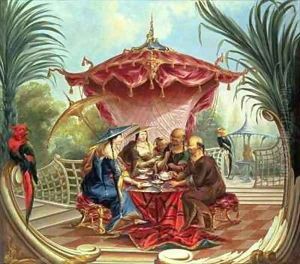Jacques Vigoureux Duplessis Paintings
Jacques Vigoureux Duplessis was a French painter, primarily known for his portraiture, who lived during the 18th century. Born in 1720, he became active in the artistic scene at a time when France was under the rule of Louis XV and was transitioning towards the reign of Louis XVI. Although not as widely recognized as some of his contemporaries, Duplessis earned a respectable reputation for his artistic skills during his lifetime.
Duplessis was trained by his father, Claude Duplessis, who was also a painter and an art teacher. This familial apprenticeship allowed him to hone his craft from a young age. He later became a member of the Académie Royale de Peinture et de Sculpture, which was the premier art institution in France during the Ancien Régime. His membership in the academy signified his acceptance and status within the official French art establishment.
Throughout his career, Duplessis painted portraits of various members of the French nobility and bourgeoisie. His work is characterized by its fine attention to detail, the elegance of the subjects, and the subtlety of his color palette. Duplessis' portraits are often noted for their refined representation of fabrics and textures, as well as the graceful depiction of his sitters' demeanors. The artist's ability to capture the likeness and personality of his subjects was highly valued, and he enjoyed patronage from many wealthy and influential individuals of his time.
Despite the French Revolution and the dramatic changes it brought to the art world and society at large, Duplessis managed to continue his work until the end of his life. He witnessed the dissolution of the Académie Royale and the rise of neoclassicism, which shifted the tastes of the art community and the public. Jacques Vigoureux Duplessis passed away in 1809, leaving behind a legacy of portraiture that provides a window into the aesthetics and social hierarchies of pre-revolutionary France.
